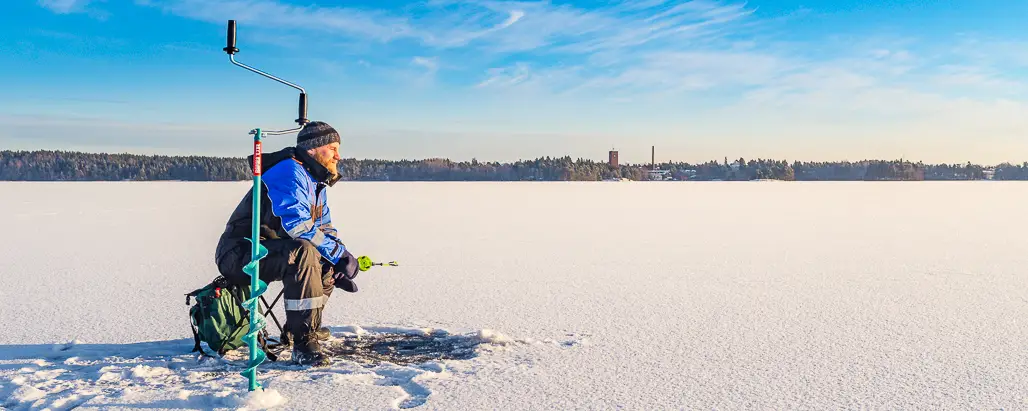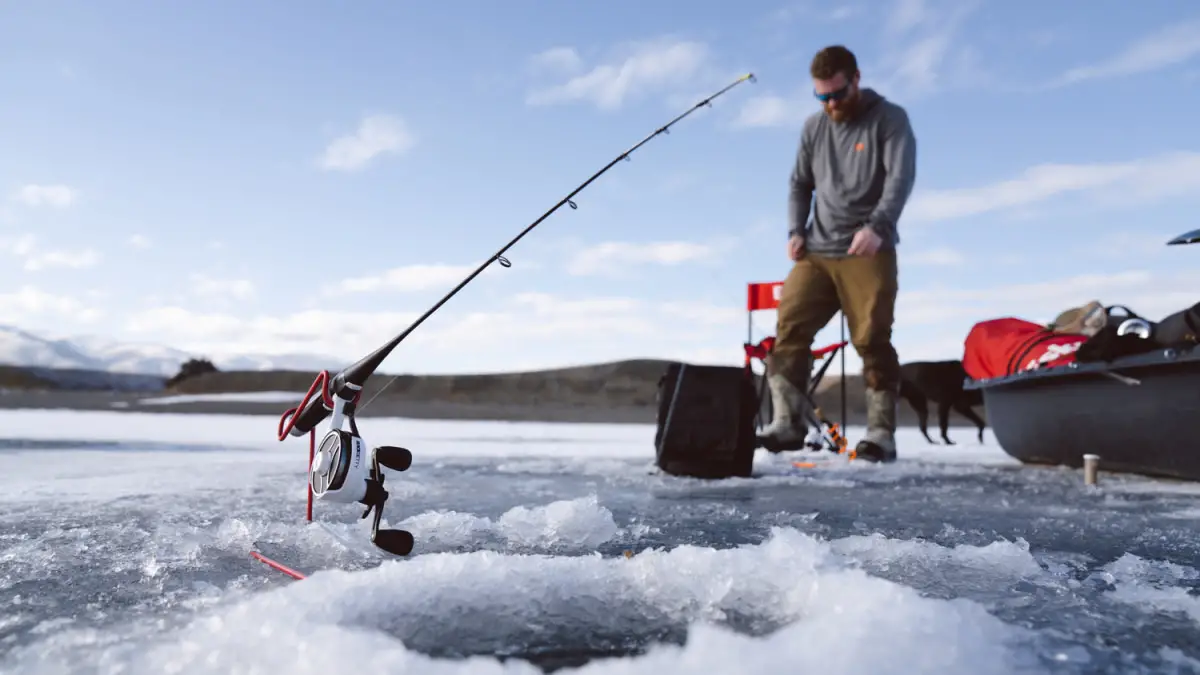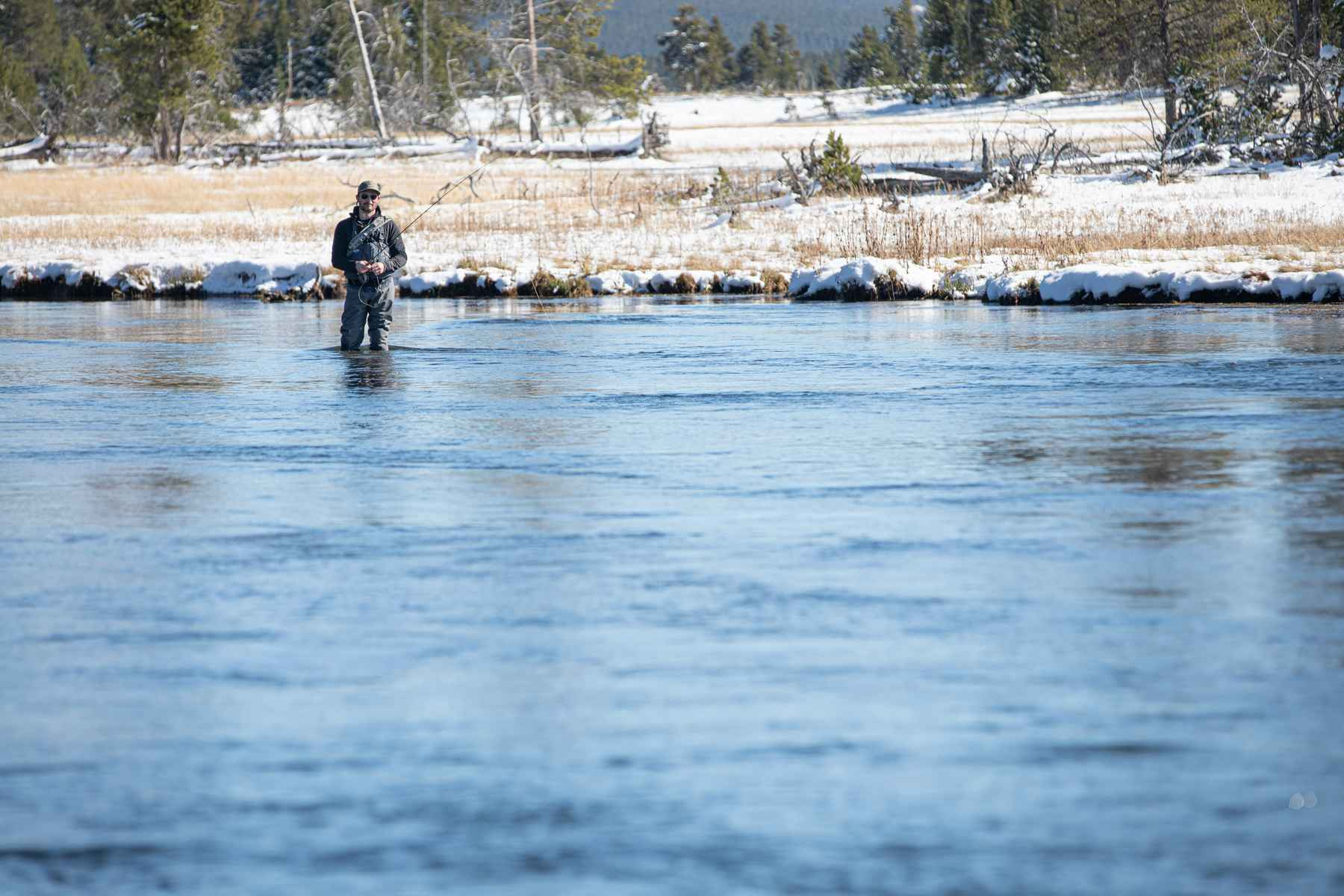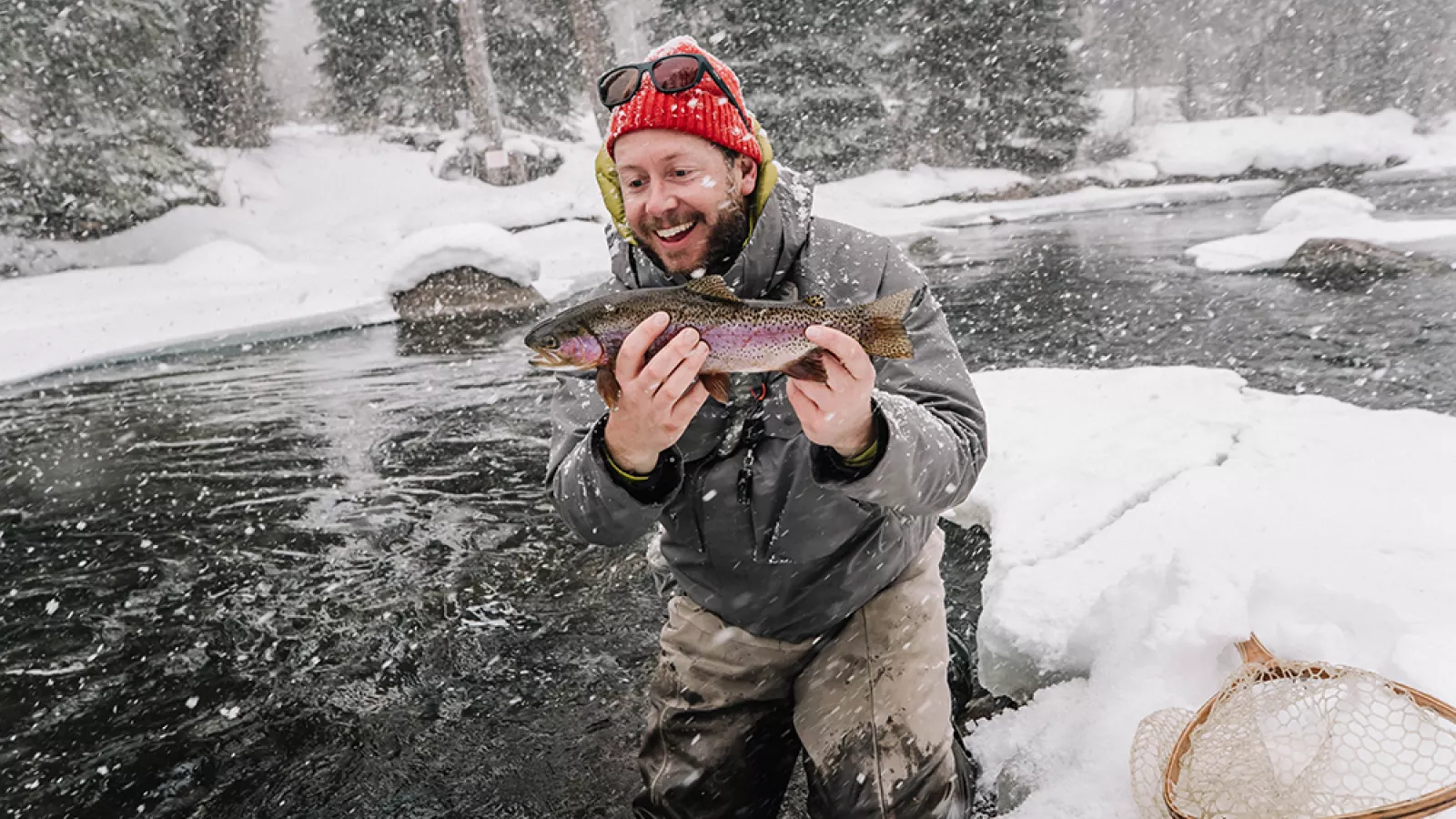Winter fishing can be a challenging yet rewarding experience for avid anglers. As the temperature drops, fish behavior changes, and understanding these changes is crucial for a successful trip.
In this article, we will explore the various challenges of winter fishing and provide you with essential tips and techniques to maximize your catch.
So bundle up and get ready to embark on a cold-weather fishing adventure!
Understanding the Challenges of Winter Fishing

Winter fishing presents unique challenges that require anglers to adapt their strategies. Weather conditions, in particular, can heavily influence fish behavior.
When it comes to winter fishing, one of the most important factors to consider is the impact of weather conditions on fish behavior. In cold weather, fish become less active and tend to move to deeper and warmer areas in search of refuge.
As the water temperature drops, fish metabolism decreases, making them less inclined to chase after bait. This means that anglers need to understand these changes in order to determine the best locations and techniques for successful winter fishing.
But what exactly happens to fish when the temperature drops? Well, just like any other living creature, fish have their own ways of coping with the cold. Some species, such as trout and salmon, are known to migrate to warmer waters during the winter months.
They swim upstream to find areas where the water temperature is more stable and suitable for their survival. Other species, like bass and walleye, tend to stay in the same general area but move to deeper parts of the water where they can find more consistent temperatures.
Weather Conditions and Their Impact on Fish Behavior
When it comes to winter fishing, anglers face a unique set of challenges that demand a keen understanding of the interplay between cold weather and the aquatic realm. Successful winter anglers employ a strategic approach, integrating winter fishing tips and leveraging the nuances of ice fishing to reel in the biggest catch.
The first key factor to consider is the water temperature, a critical metric that dictates fish behavior during the winter months. As the air temperature plummets, so does the water temperature, pushing fish into deeper water where they seek refuge from the biting cold. Anglers in pursuit of the biggest fish often focus on these depths, adjusting their fishing gear and employing specialized techniques to entice bites.
In the colder months, it’s essential to stay informed about the weather forecast and have up-to-date information. This knowledge allows anglers to adapt their strategy based on the expected conditions.
When the mercury drops, fish tend to move slower and become more selective in their feeding habits. Understanding the optimal strike zone and adjusting bait presentation accordingly can make the difference between a successful outing and a fruitless one.
For those venturing out during the winter, exploring areas with wood cover can be rewarding. Largemouth bass, in particular, often seek shelter in these environments, offering a promising locale for a potentially fruitful catch.
While many anglers gravitate toward deeper waters, exploring shallower water can also yield positive results, especially during late winter when fish may transition to warmer, shallower areas.
In winter, the clarity of the water plays a crucial role. In clear water, fish are more discerning and may be less responsive to traditional lures. Conversely, in dirty water, where visibility is reduced, employing live bait or brightly colored lures can be more effective.
To enhance your chances of success, consider using tip-ups with live minnows, a proven method for enticing bites during the colder months. Patience is key, as fish in cold temperatures may not be as aggressive. When employing slow-moving lures, it’s essential to pay close attention to subtle movements in the rod tip.
In essence, adapting to the unique challenges of winter fishing requires a holistic approach. From adjusting your float plan to selecting the right bait and understanding the intricacies of fish behavior in cold temperatures, mastering the art of winter fishing opens up opportunities to catch really big fish.
Stay attuned to the environment, keep your gear in optimal condition, and you’ll find that the cold months can be surprisingly rewarding for those who embrace the challenge.
Safety Measures for Winter Fishing
Before venturing out onto frozen lakes or rivers, it’s crucial to prioritize safety. The frozen surface can be unpredictable, so always check the thickness of the ice before stepping onto it.
A minimum thickness of four inches is generally considered safe for walking, while vehicles may require thicker ice. It’s also important to remember that ice thickness can vary across different parts of a body of water, so be sure to check in multiple locations.
Aside from checking the ice thickness, there are other safety measures that anglers should take when winter fishing. One of the most important is wearing appropriate thermal clothing. Insulated boots and gloves are essential to keep your ex tremities warm, as they are the first areas to be affected by the cold.
Layering your clothing is also important, as it allows you to adjust your insulation levels based on the weather conditions. Additionally, it’s a good idea to bring along hand warmers and hot beverages to help keep your body temperature up.
Lastly, it’s crucial to fish with a buddy when winter fishing. Having someone with you not only adds to the enjoyment of the experience, but it also provides an extra layer of safety. In case of an emergency, having another person there can make all the difference.
So, always make sure to inform someone about your fishing plans and expected return time.
Essential Gear for Winter Fishing
Having the right gear is paramount to a successful winter fishing trip. Let’s take a look at what you’ll need:
Choosing the Right Fishing Rod
When it comes to winter fishing, using a shorter and more sensitive fishing rod is recommended. A shorter rod allows for better control when fishing in tighter spaces, such as ice fishing holes. Look for a rod specifically designed for ice fishing, as they are typically sturdier and more responsive to subtle bites.
Additionally, consider the material of the fishing rod. Graphite rods are known for their sensitivity, making them a popular choice for winter fishing. They are lightweight and allow you to feel even the slightest nibble from a fish. On the other hand, fiberglass rods are more durable and can handle heavier fish. Choose a rod that suits your fishing style and the type of fish you are targeting.
Furthermore, the handle of the fishing rod is an important factor to consider. In cold weather, it’s crucial to have a handle that provides a firm grip even when wet. Look for a rod with a non-slip handle or consider adding grip tape to enhance your hold.
Importance of Insulated Clothing
Staying warm and comfortable is vital during winter fishing expeditions. Invest in quality thermal clothing, including insulated jackets, pants, and hats. Layering your clothing will provide better insulation and allow you to adjust your attire as needed.
When it comes to jackets, opt for ones with waterproof and windproof properties. These features will keep you dry and shielded from the chilling winds that often accompany winter fishing trips. Look for jackets with adjustable hoods and cuffs to further seal in warmth.
Don’t forget to wear thermal socks and waterproof boots to keep your feet warm and dry throughout the day. Cold feet can quickly ruin a fishing trip, so investing in proper footwear is essential. Consider wearing multiple layers of socks for added insulation and choose boots with good traction to prevent slipping on icy surfaces.
Furthermore, protect your hands from the cold by wearing insulated gloves or mittens. Look for gloves that are specifically designed for fishing, as they often have features such as fold-back fingertips for increased dexterity when handling fishing gear.
Lastly, don’t overlook the importance of a good hat. Heat escapes from the head, so wearing a thermal hat or beanie will help retain body heat. Look for hats that cover your ears and have a snug fit to provide maximum warmth.
Techniques for Winter Fishing

Now that you’re well-prepared with the right gear, let’s dive into some effective techniques for winter fishing:
Ice Fishing Basics
Ice fishing is a popular winter activity that involves drilling holes into the ice and dropping lines with baited hooks. It’s crucial to position your ice fishing hole strategically, as not all areas of the waterbody provide equal opportunities for catching fish.
Researching local fishing reports, studying ice patterns, and consulting with experienced anglers can greatly improve your chances of success.
When selecting a spot for ice fishing, it’s important to consider the depth of the water. Different fish species prefer different depths, so understanding the behavior and habitat preferences of the fish you’re targeting is key.
Additionally, keep in mind that fish tend to gather around underwater structures such as submerged trees, rocks, or drop-offs. These areas provide cover and attract smaller fish, which in turn attract larger predatory fish.
Once you’ve found a suitable location, it’s time to drill your hole. Make sure the ice is thick enough to support your weight and the weight of your equipment.
A minimum ice thickness of four inches is generally considered safe for walking, while six to eight inches is recommended for ice fishing. Use an ice auger or a hand auger to create a hole, and be careful not to break the ice around the edges of the hole as it can spook the fish.
Now that you have your hole, it’s time to set up your fishing gear. Use a fishing rod specifically designed for ice fishing, as they are shorter and more sensitive than regular fishing rods. Attach a small, lightweight reel with a strong fishing line.
It’s recommended to use a line with a test strength of at least six pounds to ensure it can handle the weight of larger fish. Tie a small swivel to the end of the line to prevent line twists and attach a fluorocarbon or monofilament leader with a baited hook.
Bait Selection for Cold Water Species
In winter, fish metabolisms slow down, and they require less food. Therefore, choosing the right bait is essential to attract their attention. Live bait such as minnows or wax worms is commonly used during winter fishing due to its enticing scent and natural movement. Experiment with different baits and observe which ones the fish in your area find most appealing.
When using live bait, it’s important to keep it alive and active. Minnows can be kept in a bait bucket filled with water and an aerator to provide oxygen. Wax worms, on the other hand, can be stored in a cool place to keep them fresh.
To increase the effectiveness of your bait, consider using scent attractants. These products mimic the smell of natural food sources and can help lure fish to your bait.
Another popular bait option for winter fishing is artificial lures. Jigging spoons, ice jigs, and soft plastic baits are commonly used to imitate small fish or insects. These lures can be jigged up and down or moved in a slow, erratic motion to mimic injured prey. Experiment with different colors, sizes, and actions to find the best lure for the fish species you’re targeting.
When using artificial lures, it’s important to pay attention to the water temperature and fish behavior. Fish tend to be less active in colder water, so a slower presentation may be more effective. Additionally, try varying your retrieval speed and depth to find the sweet spot that triggers a strike.
Locating Fish in Winter

Identifying fish locations in winter can be challenging, but with some key strategies, you can increase your chances of finding them:
Winter fishing can be a thrilling and rewarding experience, but it requires a different approach compared to fishing in other seasons. The cold temperatures and icy conditions make fish harder to locate, but with the right techniques, you can still have a successful fishing trip.
Reading Ice Patterns
One effective technique is to read the patterns on the ice surface. Look for cracks, ridges, or areas where the ice color changes, as these can indicate underwater structures that attract fish. These structures, such as submerged rocks, fallen trees, or underwater vegetation, provide shelter and food sources for fish.
By carefully observing the ice patterns, you can identify potential hotspots where fish are likely to congregate. These areas are often characterized by irregularities in the ice, suggesting the presence of underwater structures. Casting your line near these spots can significantly increase your chances of a successful catch.
Additionally, pay attention to areas where warmer springs or underwater currents may create open patches or thinner ice. These areas can serve as access points for fish, allowing them to move between different parts of the water body. By targeting these areas, you can intercept fish as they navigate through the icy terrain.
Utilizing Sonar Technology
Sonar technology, commonly used for depth and fish finding, can be extremely useful during winter fishing. Portable fish finders equipped with ice transducers allow you to locate potential fishing spots, determine the depth of the water, and identify fish presence beneath the ice.
With a fish finder, you can gain valuable insights into the underwater landscape. It provides real-time data on the depth contours, underwater structures, and the presence of fish. By analyzing this information, you can pinpoint the most promising locations to drop your line.
When using a fish finder, pay attention to the depth at which fish are located. In winter, fish tend to stay closer to the bottom of the water body, where the temperature is more stable. Adjust your fishing technique accordingly, ensuring that your bait or lure is at the right depth to attract the fish.
Furthermore, some advanced fish finders offer features like fish identification and fish tracking, which can enhance your fishing experience. These features allow you to differentiate between different species of fish and track their movements, giving you a better understanding of their behavior and helping you adapt your fishing strategy accordingly.
By combining the knowledge gained from reading ice patterns and utilizing sonar technology, you can significantly improve your chances of catching fish during the winter season.
Remember to always prioritize safety and check the ice thickness before venturing out onto frozen water bodies. With patience, skill, and a bit of luck, you can have a successful winter fishing adventure.
Catch and Release in Cold Weather

If you choose to practice catch and release during your winter fishing trip, there are a few things to keep in mind:
Proper Handling of Fish in Winter
Handling fish with care is essential, especially in cold weather when their survival is more fragile. Avoid exposing the fish to freezing air for extended periods and handle them gently to minimize stress. Wetting your hands before touching a fish can help preserve their protective slime coating, which is crucial for their overall health.
Ensuring Fish Survival Post-Release
Before releasing a fish back into the water, make sure it has fully recovered and is swimming strongly on its own. If the fish appears disoriented or fatigued, hold it gently in the water facing upstream to allow for proper oxygenation. Patience is key, as some fish may require a bit more time to regain their strength after a successful release.
By following these winter fishing tips and techniques, you’ll increase your chances of having a successful and enjoyable trip. Remember to always prioritize safety, dress appropriately for the cold weather, and respect the fish you catch.
So, grab your gear, head out onto the ice-covered lakes, and embrace the unique challenges and rewards of winter fishing!

